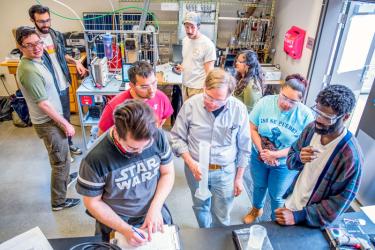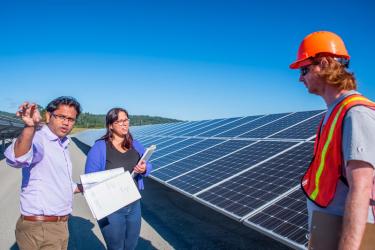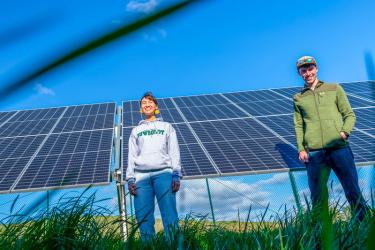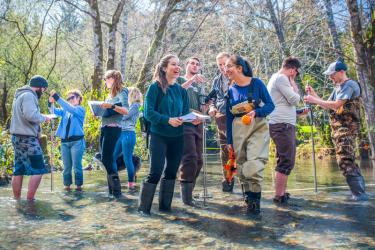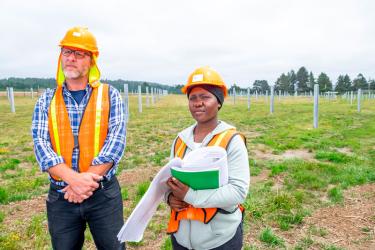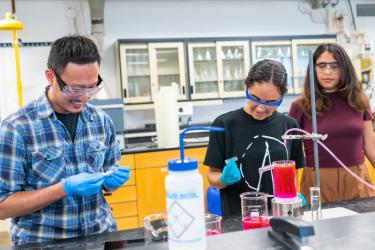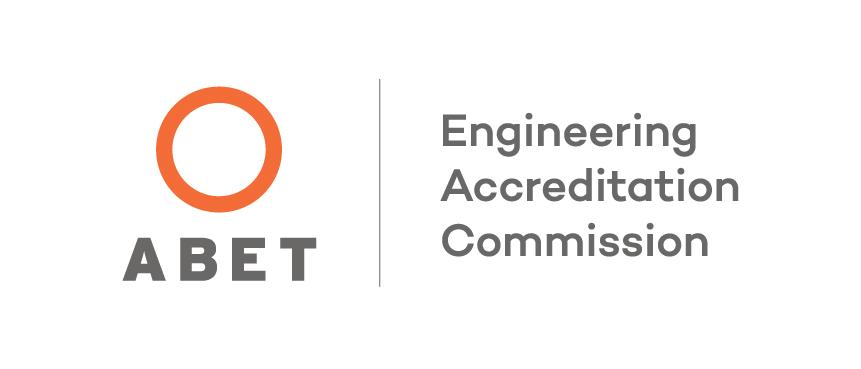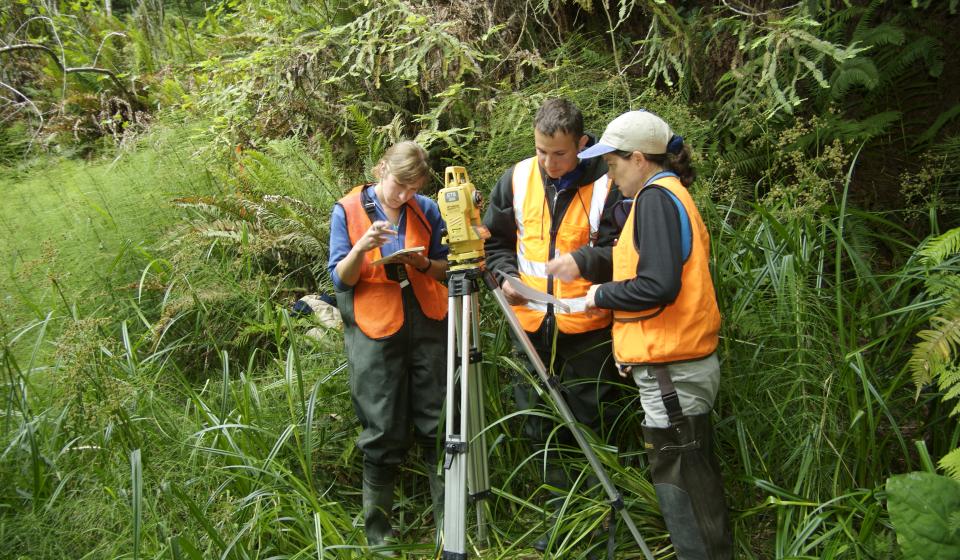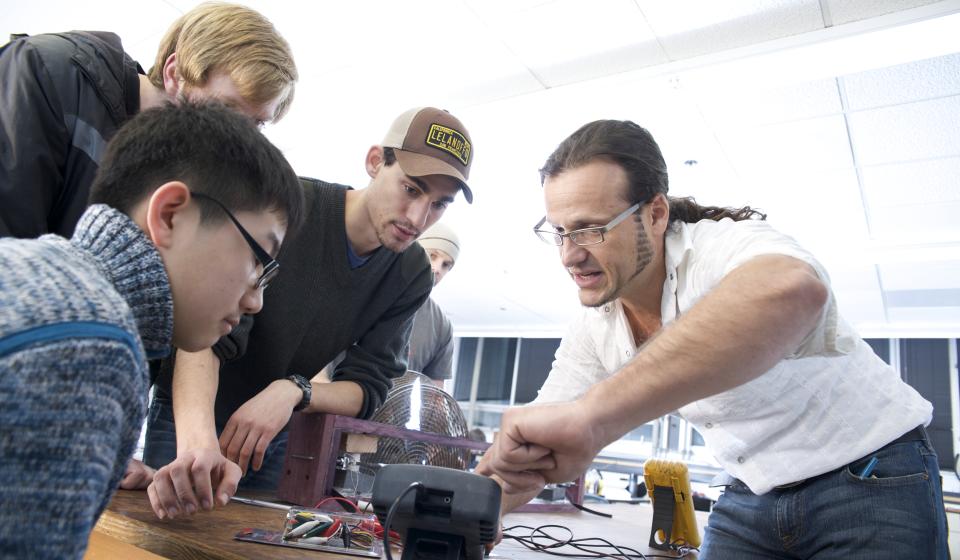Program Information
School of Engineering Purpose Statement
The Cal Poly Humboldt School of Engineering brings together scholars and students to create transformative learning opportunities, to develop innovative research projects, and to engage with local and global communities in collaborative work to find solutions to the critical environmental, economic, and social challenges we face.
Program Educational Objectives
Program educational objectives describe what an Engineering graduate should be able to do in the years following graduation from the School of Engineering. The program objectives for each of the three undergraduate programs within the School of Engineering are listed below.
Environmental Resources Engineering (ERE) Program Educational Objectives
- Apply engineering analysis and design to investigate, create, and evaluate systems that solve critical environmental resources problems, while protecting, restoring and sustaining the environment and communities.
- Practice their professions with the highest standard of care, demonstrating respect for social, ethical, cultural, environmental, economic, and regulatory concerns.
- Continue their professional development by advancing their knowledge and skill base through obtaining engineering licensure and other certifications, completing postgraduate study, and/or other appropriate means…continually advancing their knowledge and skill base.
- Demonstrate leadership in the profession as well as in diverse and interdisciplinary team settings, drawing out the best in their co-workers and effectively communicating and collaborating with a range of constituents and the public.
Mechanical Engineering (ME) Program Educational Objectives
- Apply engineering analysis and design to solve problems related to mechanical, electromechanical, manufacturing, or thermal systems, incorporating social and environmental factors.
- Practice engineering with the highest professional standards, demonstrating respect for social, ethical, cultural, environmental, economic, and regulatory concerns.
- Continue their professional development by obtaining engineering licensure and other certifications, completing postgraduate study, and continually advancing their knowledge and skill base.
- Demonstrate leadership in the profession as well as in diverse and interdisciplinary team settings, drawing out the best in their co-workers and effectively communicating and collaborating with a range of stakeholders and the public.
Energy Systems Engineering (ESE) Program Educational Objectives
- Apply engineering analysis and design to create and operate clean and resilient energy systems that protect, restore and sustain the climate, environment, and communities.
- Practice engineering with the highest professional standards, demonstrating respect for social, ethical, cultural, environmental, economic, and regulatory concerns.
- Continue their professional development by obtaining engineering licensure and other certifications, completing postgraduate study, and continually advancing their knowledge and skill base.
- Demonstrate leadership in the profession as well as in diverse and interdisciplinary team settings, drawing out the best in their co-workers and effectively communicating and collaborating with a range of stakeholders and the public.
Student Outcomes
The School of Engineering has seven educational outcomes for all of its engineering undergraduate programs. Program outcomes foster attainment of the program educational objectives. Program outcomes describe what an engineering graduating senior should have the ability to do upon graduation:
- an ability to identify, formulate, and solve complex engineering problems by applying principles of engineering, science, and mathematics
- an ability to apply engineering design to produce solutions that meet specified needs with consideration of public health, safety, and welfare, as well as global, cultural, social, environmental, and economic factors
- an ability to communicate effectively with a range of audiences
- an ability to recognize ethical and professional responsibilities in engineering situations and make informed judgments, which must consider the impact of engineering solutions in global, economic, environmental, and societal contexts
- an ability to function effectively on a team whose members together provide leadership, create a collaborative and inclusive environment, establish goals, plan tasks, and meet objectives
- an ability to develop and conduct appropriate experimentation, analyze and interpret data, and use engineering judgment to draw conclusions
- an ability to acquire and apply new knowledge as needed, using appropriate learning strategies.
How to Apply
So environmental resources engineering sounds interesting, but you are still not sure if Humboldt is right for you? Explore what Humboldt has to offer to both freshman and transfer students.
Paperwork
For paperwork and forms such as major and minor contracts, course planning guides, semester schedules, course rotations, office hours and more, visit our forms page!

